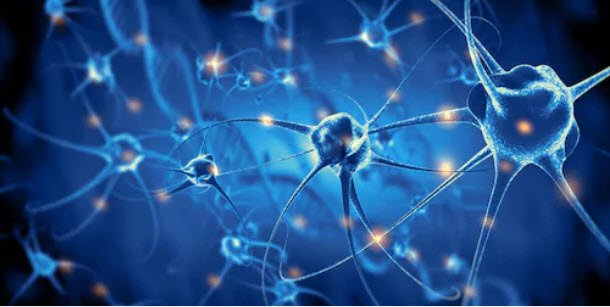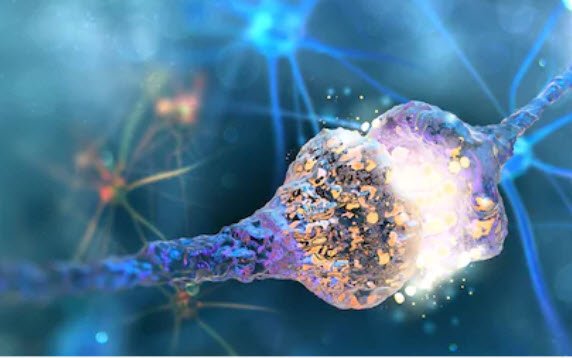Things you should know about Amyotrophic lateral sclerosis (ALS)
Amyotrophic lateral sclerosis (ALS) is commonly known as Lou Gehrig's disease and is a progressive neurological disease. It affects muscle movement by preventing the nerves that control these movements from working properly.
As time goes on, dysfunctional nerves cause muscle weakness and weakened muscles gradually cause paralysis.
The later stages of ALS can affect breathing and other crucial bodily functions, which can lead to death. This is because the nerves that control these functions are severely affected by the disease.

Difference between MS and ALS
Both Multiple Sclerosis (MS) and ALS are neurodegenerative diseases that affect the central nervous system, namely the brain and spinal cord. In many cases, the two diseases have similar symptoms, such as muscle weakness and paralysis. Unfortunately, neither disease has a cure, but both can be treated.
Despite their similarities, there are some important differences between the two diseases.
For example, ALS is more common in men than in women and appears in any age range between 4 and 70 years. By contrast, multiple sclerosis is more common in women and usually occurs between 20-50 years.
Some additional basic differences between the two diseases include that ALS often causes paralysis, whereas MS can-though not always-cause a complete weakening; ALS is mainly physical, while MS also causes mental problems, such as memory loss; ALS is not an autoimmune disease. On the contrary, experts believe that many forms of MS are autoimmune.
Who discovered this neurological disease?
We can find the first indications of ALS towards the second half of the 19th century, when the pioneering French neurologist and professor of pathological anatomy (he was also the first professor of neurology in the world), Jean-Martin Charcot, was assigned to the Hospital de la Pitié- Salpêtrière. In this place, Charcot was interested in this type of neurological problems and began to investigate, classifying and differentiating the disease from other nervous conditions. He defined Amyotrophic Lateral Sclerosis in 1869.
What is ALS?
Amyotrophic lateral sclerosis (ALS) is a group of rare neurological diseases that mainly affect the nerve cells (neurons) responsible for controlling voluntary muscle movement. The voluntary muscles produce movements such as chewing, walking and talking. The disease is progressive, which means that the symptoms get worse over time. Currently, there is no cure for ALS and there is no effective treatment to stop or reverse the progression of the disease.
The term "amyotrophic lateral sclerosis" comes from the Greek "amyotrophic" meaning loss or thinning of the muscle. "Lateral" refers to the location of nerve cells that deteriorate in the spinal cord, at its farthest edge. When these nerve cells die, they leave a scar in the spinal cord that is known as "sclerosis."
Symptoms
The first symptoms of ALS usually include muscle weakness or stiffness. Gradually, all muscles under voluntary control are affected and patients lose their strength and ability to speak, eat, move and even breathe. The spread of symptoms varies from patient to patient, but eventually, all patients will lose the ability to move and breathe on their own.
Causes
The reasons that cause the appearance of ALS are unknown in most cases, since only between 5 and 10% of cases represent hereditary causes. The fact that a relative has had ALS is considered a risk factor to develop the pathology. For the rest, ALS is a very complicated and mysterious disease.
Life expectancy
Most people with ALS die from respiratory failure, usually within 3 to 5 years from the time the first symptoms appear. However, about 10% of people with ALS survive for 10 or more years and 5% live 20 years or more, according to the ALS association.

Types of ALS
We tend to refer to ALS as a single disease but there are three types of ALS: the familiar or hereditary, the sporadic and the one that studies with dementia. Sporadic ALS occurs at random, and represents 90% to 95% of cases. Family ALS has a hereditary component, in which 5-10% of cases are family. The offspring of a person with ALS has a 50% chance of developing the disease.
Genetics
One factor that probably plays a key role in patients' survival time is genetics. Scientists have identified more than 20 different genes involved in ALS, according to scientists at the Northwell Health Neuroscience Institute in Manhasset, New York (USA). Some of these genetic differences seem to affect several aspects of the disease, including survival. For example, a gene called SOD1, is associated with a faster course of the disease.
The diagnosis of ALS has also been related at an early age (as with Stephen Hawking) with a longer survival time.
Influential factors
Smoking and exposure to secondhand smoke can be risk factors in the development of ALS, and ALS associated with smoking affects a relatively large percentage of the population, at least in the United States. Some possible factors have been found between ALS and mechanical or electrical trauma, military service, high levels of exercise, agricultural chemicals and a variety of heavy metals. However, there is no conclusive scientific evidence that specific lifestyle changes can reduce the risk of developing the disease.
Treatment and prevention
There is no cure for ALS, so the treatment aims to relieve symptoms, prevent unnecessary complications and decrease the rate of disease progression.
ALS can cause a great variety of physical, mental and social changes, so it is necessary for a team of specialists to help patients control their symptoms and care, improve their quality of life and prolong survival.
Medications: Riluzole was approved for the treatment of ALS by the Food and Drug Administration (FDA) in 1995, and appears to slow the progression of the disease.
In May 2017, and not without controversy, Radicava (Edaravona) was approved to treat ALS. Can minimize the decrease in physical function by one third.
The ALS can attack at any time, but usually appears between 55 and 75 years of age.
It affects men more than women and military veterans are 1 to 2 times more likely to develop ALS than people who have not served in the military.
ALS patients burn calories much faster than those who do not have the disease and, as a result, tend to have a low weight.
As there is no test to diagnose ALS, the diagnosis is made through a variety of observations and scans.
Final moments
People with ALS usually die from respiratory failure, which occurs when the nerve cells that control respiratory muscles stop functioning, or also from malnutrition and dehydration, when the muscles that control swallowing deteriorate, according to Leo McCluskey, associate professor of neurology and medical director of the ALS Center at the University of Pennsylvania (USA).
The future
It is estimated that at any given time, from 1 to 7 of every 100,000 people in the world will have ALS. Fifteen new cases of ALS are diagnosed each day, being a disease that appears throughout the planet without obvious racial, ethnic or socioeconomic limits.

Fuente: CenterWatch
Images: shutterstock.com
@misterioyciencia you were flagged by a worthless gang of trolls, so, I gave you an upvote to counteract it! Enjoy!!
Congratulations @misterioyciencia! You have completed the following achievement on Steemit and have been rewarded with new badge(s) :
Click on the badge to view your Board of Honor.
If you no longer want to receive notifications, reply to this comment with the word
STOPCongratulations @misterioyciencia! You have completed the following achievement on the Steem blockchain and have been rewarded with new badge(s) :
Click here to view your Board of Honor
If you no longer want to receive notifications, reply to this comment with the word
STOPCongratulations @misterioyciencia! You received a personal award!
You can view your badges on your Steem Board and compare to others on the Steem Ranking
Vote for @Steemitboard as a witness to get one more award and increased upvotes!